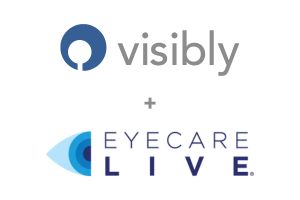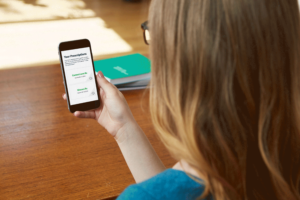Did you complete a vision test during covid?
ublished on RealClear Health. Read original article here.
Nearly eight in ten Americans put off medical services during the Covid-19 pandemic—and vision exams were one of the first things to go.
This is especially concerning given that increased screen time—practically necessitated by the pandemic—can wreak havoc on our vision, causing problems from dry eyes to headaches to eye strain. It’s no wonder that 60 percent of Americans are concerned about the effects increased screen time will have on their eyes.
But when it comes to our vision, technology, and a little bit of additional screen time, offers a way to help. Online vision tests can help ensure patients receive and renew their proper vision prescription. These virtual visual assessments can make a huge difference in the quality of life for those who wear glasses and contacts—even when they’re unable to make it into an exam room—by determining if the patient is seeing at an optimal level.
Before the pandemic struck, technological innovations in the healthcare sphere that allowed remote or virtual care were generally not permitted, or at least not widely so. But, in an odd sort of silver lining, strict lockdowns prompted federal and state health agencies and officials to grant temporary use of many “telehealth” options, from hearing tests to speech therapy to cognitive tests.
This was absolutely the right call. Doing so not only allowed patients to stay safe and healthy in the comfort of their own homes, but helped ease the strain on our overburdened healthcare system. Telehealth brings costs down for practitioners and patients—a win-win.
But now that the pandemic is on its (hopefully) last legs, some of these innovative telehealth options may revert to being off limits. It is up to the federal and state lawmakers and regulatory bodies to update their guidance to make these changes permanent, so these innovations can do what they were meant to—make it easier for patients to stay healthy.
While the pandemic caused people to skip dental cleanings, annual physicals, eye exams, and even treatments for serious medical conditions, the fact is many Americans put off these types of preventive and routine check-ups even before the pandemic.
Rural patients, for example, often don’t have easy access to specialist practitioners like optometrists and ophthalmologists. Some 25 percent of our nation’s counties do not have an optometrist office or optical goods store. And for 40 percent of rural patients, a visit to a specialist means a 20-plus mile trip. For rural patients, it just may be too inconvenient to make the trek—especially for something they might not see as a critical need, such as renewing an eyeglass prescription.
Underserved communities also faced barriers to care before the pandemic, possibly because lower access to resources coupled with high healthcare costs are deterrents from making a trip to the doctor’s office.
Telehealth technologies can help ease these disparities and promote health equity—and they are very popular with patients. More than half of Americans used some form of online healthcare during the pandemic, compared to just 29 percent before. And more than 80 percent of those who have tried it, like it.
Online healthcare innovations, such as online vision tests, are not just helpful and convenient for patients, they can also help the healthcare system avoid becoming even more overburdened.
The United States is in the midst of an extreme healthcare worker shortage that is only projected to worsen. Telehealth innovations allow practitioners to see more patients with potentially critical conditions in person.
Take Visibly, the company where I work. We provide virtual vision tests that measure how well your current eyeglasses or contacts are performing. Then, the test results are always shared with a licensed practitioner who can approve and issue a prescription or recommend that the individual see an eye care professional in-person.
While this technology is by no means a replacement for in-person annual eye exams, which are crucial for catching serious illnesses like glaucoma, it is a valuable addition to our healthcare system. It takes only 5 minutes to complete the online test, meaning patients who might otherwise be unable to make an in-person appointment can easily mark a vision test off their to-do lists.
One case study found that more than 10 minutes of “chair time” was freed up for in-person appointments for each online vision test, doubling a practice’s capacity. And during the study, a patient opting to go with the online test freed up valuable in-office time for a patient discovered to have macular degeneration.
The pandemic has clearly demonstrated the value of innovations that make telehealth possible. There is no reason to prevent these amazing technologies from making things easier for both providers and patients. Let’s hope that lawmakers and regulators at the state and federal levels recognize this value and enact laws and regulations to make the use of these technologies permanent.
Brent Rassmussen is CEO of Visibly, the leader in online eye tests.


